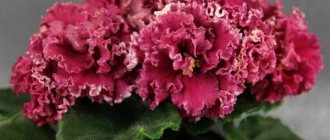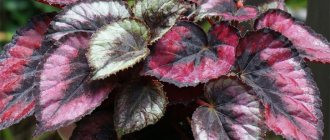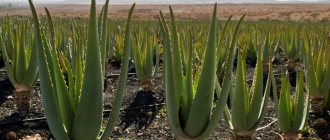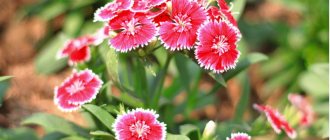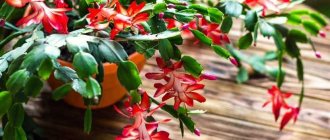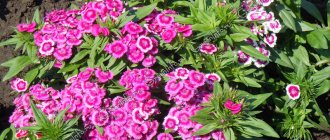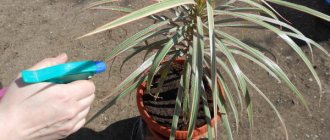Features of care
In order for the carnation to please the eye with its lush and bright blooms (photo), it is necessary to provide it with the most comfortable conditions. Caring for a houseplant at home involves loosening the soil, timely watering, fertilizing and cutting off wilted inflorescences.
On a note!
Before starting to grow this amazing, pleasantly smelling plant, every gardener, especially a beginner, needs to familiarize himself with information on how to care for carnations at home.
Kinds
Turkish carnation, also known as bearded carnation
A beautiful biennial flower reaching 15-90 centimeters. The shoots stand straight, branch weakly, and among them there are burgundy ones. The foliage is lanceolate, narrow, colored green or bluish-green. The leaf is four to ten centimeters long.
Important! After a year of growth, a large and bright apical umbrella appears, which consists of several flowers, each having a diameter of a couple of centimeters, and among them there may be double ones.
The flowers of this carnation variety also have wide and jagged petals. They may have the following colors:
- burgundy;
- black;
- white;
- pink;
- purple;
- red.
Turkish carnation can have petals of different colors
Garden carnation
This is a perennial flower that can grow up to 80 centimeters. Its stems are geniculate, slightly branching. A year after planting, this carnation already has a basal rosette made up of oblong leaves, which can be colored green or, alternatively, bluish-green. Starting from the second year, rather thin stems for flowers begin to grow. And there, in pairs, opposite each other, long sessile leaves are located.
Important ! When in flower, the tops of the stems bear large, bright flowers, adorned with a large number of jagged petals in a variety of shades.
Garden carnation is a perennial
Carnation Shabo
An evergreen perennial bush, reaching three to six tens of centimeters. At the very bottom it has a large basal rosette, composed of oblong, entire green leaves. The slightly branched, geniculate stem stands erect. There, in pairs, opposite each other, there are small sessile leaves.
Important ! The delicious-smelling flowers are double or, alternatively, simple, five centimeters in diameter.
Shabot clove attracts with its aroma
Chinese carnation
Perennial flower. Sometimes it reaches 70 centimeters, although it is not always so high. Narrow leaves of dark or bluish-green colors sit on straight-growing stems. They reach three to five centimeters.
Important! Bright inflorescences of a dozen to one and a half small apical flowers.
Chinese carnations can be of different colors: burgundy, white, red, etc.
feathery carnation
Perennial flower. Its thin shoots stand upright or lie down. The leaves, arranged in pairs, opposite each other, are simple, sessile, have a narrow linear shape, are glossy in color, dark green, and sometimes have a bluish tint. The flowers are arranged singly or in inflorescences, each of which contains from two to five pieces. The plant blooms for quite a long time.
Important! The petals are uniform in color and have small teeth.
Their color range:
- pink;
- lilac;
- white.
Pinnate carnation is also a perennial plant
Field carnation, also known as queen carnation
This is a tender perennial plant. Its rather thin, geniculate stems stand erect and branch at the top. Tapered green leaves sit in pairs, opposite each other.
Important! Pink or, alternatively, lilac flowers sit one at a time on the stem and bloom in the summer at the top of the shoots.
Field carnation
Alpine carnation
This beautiful flower reaches ten centimeters. It is often grown as a ground cover plant. The bushes have lodging stems, branched near the ground. The foliage is glossy, entire, sessile. Each leaf reaches a length of a couple of centimeters. Single flowers, pleasing to the eye all summer, have a diameter of four centimeters.
Important! They smell pleasantly sweet.
Color spectrum:
- pink;
- lilac;
- burgundy
Alpine carnation has a short "growth" and is therefore often grown as a ground cover plant.
Carnation grass, also known as deltoid
This is a small plant, reaching ten to fifteen centimeters. Its stems stand straight and branch at the top. The leaves are sessile, glossy, and have a narrow linear shape. They are green in color.
Important! Bright pink flowers, one and a half to two centimeters in diameter, sit one at a time.
Dianthus deltoid
Krylov's carnation, also known as sandy
This is a perennial flower, reaching one to two tens of centimeters. Its basal rosette is formed from narrow linear dark green leaves. Thin stems are vertical, knotty. The leaves sit on them in pairs, opposite each other. The diameter of flowers sitting one at a time can reach three centimeters.
Important! The petals are white, and due to the fact that their edges are strongly cut, the flower is visually very airy.
Sandy carnation attracts attention with its unusual white petals
Fischer's carnation
A low flower, the erect or lodging stems of which branch profusely at the very top. The leaves are narrow-linear, green, and a slightly bluish tint is possible.
Important! The flowers are solitary or, alternatively, form small inflorescences at the top.
Petals are finely toothed. Their color range:
- burgundy;
- pink;
- lilac;
- white.
Fischer's carnation
Alwood's carnation
The stems are thin and vertical. They reach a couple of tens of centimeters. Linear foliage is sessile, dark or, alternatively, silvery green. Bright single flowers are pink in color, have a dark rim and a pleasant smell. Their diameter can be up to five centimeters.
Important! And the flowers are double or semi-double.
Alwood's carnation is also short
Needle-leaved carnation
A plant reaching fifteen to thirty centimeters. Its stems branch at the top. The rather narrow sessile foliage is green or bluish, and its length ranges from two to four centimeters. The pleasant-smelling flowers have a diameter of two and a half centimeters.
Needle-leaved carnation has white petals
Amur carnation
An evergreen flower reaching thirty centimeters. The stems are vertical or, alternatively, lodging. The leaves sit in pairs, opposite each other. The leaves are slightly bent along the veins. The flowers sit one at a time on a stem or form small inflorescences.
Important! The shades of the petals are lilac and pink.
Amur carnation usually has lilac or pink flowers.
Carthusian carnation
This plant is a grass that grows up to fifty to sixty centimeters. Its stems are erect and gnarled. At the top they often branch. The leaves are extremely narrow, almost needle-like, and they are seven centimeters long.
Important ! The flowers are pink or lilac and have a strong scent
Carthusian carnation smells very nice
Grenoble carnation
The height of this delicate perennial plant does not exceed thirty centimeters. During its life, it forms large rounded hummocks. Stems are vertical. The leaves are slightly bluish. White or, alternatively, pink flowers are single, pleasantly scented.
Important ! They appear in summer on the tops of stems.
Grenoble carnation
Armeriform carnation
A plant sometimes reaching sixty centimeters. Stems are erect. The green foliage is matte, sitting in pairs, one leaf opposite the other. Small inflorescences on the tops of the stems are composed of beautiful pink or lilac flowers.
Important! The petals are narrow, finely toothed.
Armeriform carnation has narrow petals
Short-stemmed carnation
A small perennial plant. Suitable as a carpet plant. Many thin, erect stems. The foliage is narrow, sessile. The simple pink flowers have a sweet scent.
Important ! Most varieties of cloves are no taller than half a meter. But there are species that grow even up to ninety centimeters.
Short-stemmed carnations are often used to create “carpets” in the garden.
Lighting
Carnations are also demanding regarding lighting conditions. The flower should receive natural light at least five hours a day. But at the same time, it is necessary to protect the plant from sunlight, otherwise the carnation will get burned.
If for some reason it is not possible to provide an influx of sunlight for a longer period of time, it is recommended to use artificial lighting. Otherwise, the plant’s growth will slow down, the leaves will begin to become smaller, and the flowering will be short and sluggish.
Possible problems
When growing indoor carnations, some problems may arise:
- Loss of leaves and falling buds can be a consequence of insufficient saturation of the soil with potassium-phosphorus fertilizers, as well as irregularities in irrigation.
- The leaves are turning pale . This may be caused by insufficient lighting and powdery mildew disease. In the first case, you need to move the flower closer to a sunny window, in the second, isolate the plant from its neighbors on the windowsill and carry out therapeutic measures.
- The tips of the leaves dry out . This can happen if the neck of the stem is exposed. In this case, you need to water it, cover it tightly with soil and make sure that this does not happen again.
- The lower leaves fall off . This can happen with excessive watering and if water flows down the leaf blade. Adjust watering.
Yellowing of leaves
Humidity and watering
For rapid growth and the formation of healthy flower stalks, it is recommended to regularly spray using settled warm water. You can also water the bushes with it.
On a note!
Indoor carnation is a moisture-loving flower, so it needs regular and abundant watering, this is especially true during the period of active growth, budding and flowering.
In addition, caring for indoor carnations at home requires compliance with the following rules. Monitor the condition of the soil in the container with the flower, do not allow it to dry out.
What varieties of cloves are grown from seeds?
Nature and breeders have developed about 300 varieties of cloves. Not all are suitable for growing from seeds. The most common varieties that are suitable for seed planting are:
- Dutch is a perennial, the main feature of which is considered to be long and abundant flowering, beginning in the second half of July and continuing until the onset of the first frost. Carnations bloom in different shades, but the most popular is red, edged with a white stripe.
- Chinese carnations can decorate any area in the garden or flower bed. The flowers are collected in inflorescences, the colors of which are very diverse and have a bluish tint.
- Pinnate is a small bush with double, densely packed flowers. This gives the variety a zest and unusualness.
- Turkish is an easy-to-care variety, the inflorescences of which on one bush can have different shades. Several inflorescences can form on one plant.
Feeding
Twice a month, when the plant is in the phase of active development, it is necessary to support it with fertilizers. To do this, it is recommended to purchase special formulations with a high potassium content.
On a note!
Fertilizer can be diluted with both water and milk. The resulting solution is sprayed onto the soil in the flower pot, avoiding contact with the flowers and leaves. The first procedure can be carried out a month after sowing the seeds.
Planting carnations in open ground
On the site, seed sowing is planned immediately after positive air temperatures are established.
What varieties of carnations are suitable for planting in open ground?
Absolutely all varieties are suitable for this method of planting; you just need to take into account the characteristics of a particular variety and the climatic conditions of the region.
The most popular varieties are: Chinese carnation, pinnate, Turkish and Dutch.
When can you plant carnations in open ground?
Depending on the region, planting of cloves begins in mid-April. When sowing carnations directly into a flowerbed, you need to be prepared for the fact that some varieties will begin to bloom only in the second year.
How to plant in open ground, step by step?
Before planting, it is important to carefully prepare the area; there should be no debris or weeds on it.
- The area must be loosened and, if necessary, fertilizer and ash added to maintain the required acidity level.
- After this, shallow grooves are made, where the clove seeds are sown. It must be taken into account that the bushes will grow.
- The furrows are covered with a 1 cm layer of soil and moistened.
Transfer
Since cloves are grown as annuals, they do not require replanting. Therefore, we can only talk here about methods of propagating the variety you like.
The main and most common method of propagating carnations is by sowing seeds. To do this you need to do the following:
- pour water into the hole (when sowing dry seeds);
- place planting material there, planting depth - no more than 1 cm;
- sprinkle with soil;
- moisten the soil using a spray bottle;
- cover the container with a polyethylene cap.
Important!
The film should be opened slightly several times a week - this will allow the sprouts to gain access to oxygen. The soil in the greenhouse must be periodically moistened until seedlings emerge. This will happen in about 2 weeks.
A month later, young plants should be planted in pots at a distance of at least 5 cm from each other. To propagate carnations, you can also use the cutting method. Cuttings are taken only after flowering has ended.
Planting carnation seedlings in open ground
They begin to plant carnations in open ground in May, when night frosts have completely subsided. Despite the fact that cloves are a frost-resistant crop, frosts during this period can provoke long-term adaptation and, possibly, death.
How to choose a place to plant carnations
The area where it is planned to grow flowers should be well lit and protected from wind and drafts.
Where can you plant carnations?
Carnation goes well with many flower crops. They can be asters, delphinium, alpine plants, poppies and other decorative varieties.
How to prepare carnation seedlings for planting in open ground?
Before planting seedlings, they need to be prepared for this - hardened off.
They do this gradually. To begin with, the boxes are taken out into the fresh air for 5-10 minutes. Gradually, the time increases until the plant can be exposed to air even at night.
How to prepare a place to plant carnations outdoors
Before planting, the area is cleared of weeds and other debris. The soil is dug up and complex fertilizers are added there strictly in accordance with the recommendations on the packaging.
How to plant flowers correctly, step by step
Plants are planted according to the following scheme:
- depressions are made in the soil slightly larger than the root system of the flower; you can plant it with a lump of earth from an old container;
- the flower is planted in the prepared hole and covered with earth on top;
- The ground is compacted a little and slightly moistened with settled water at room temperature.
